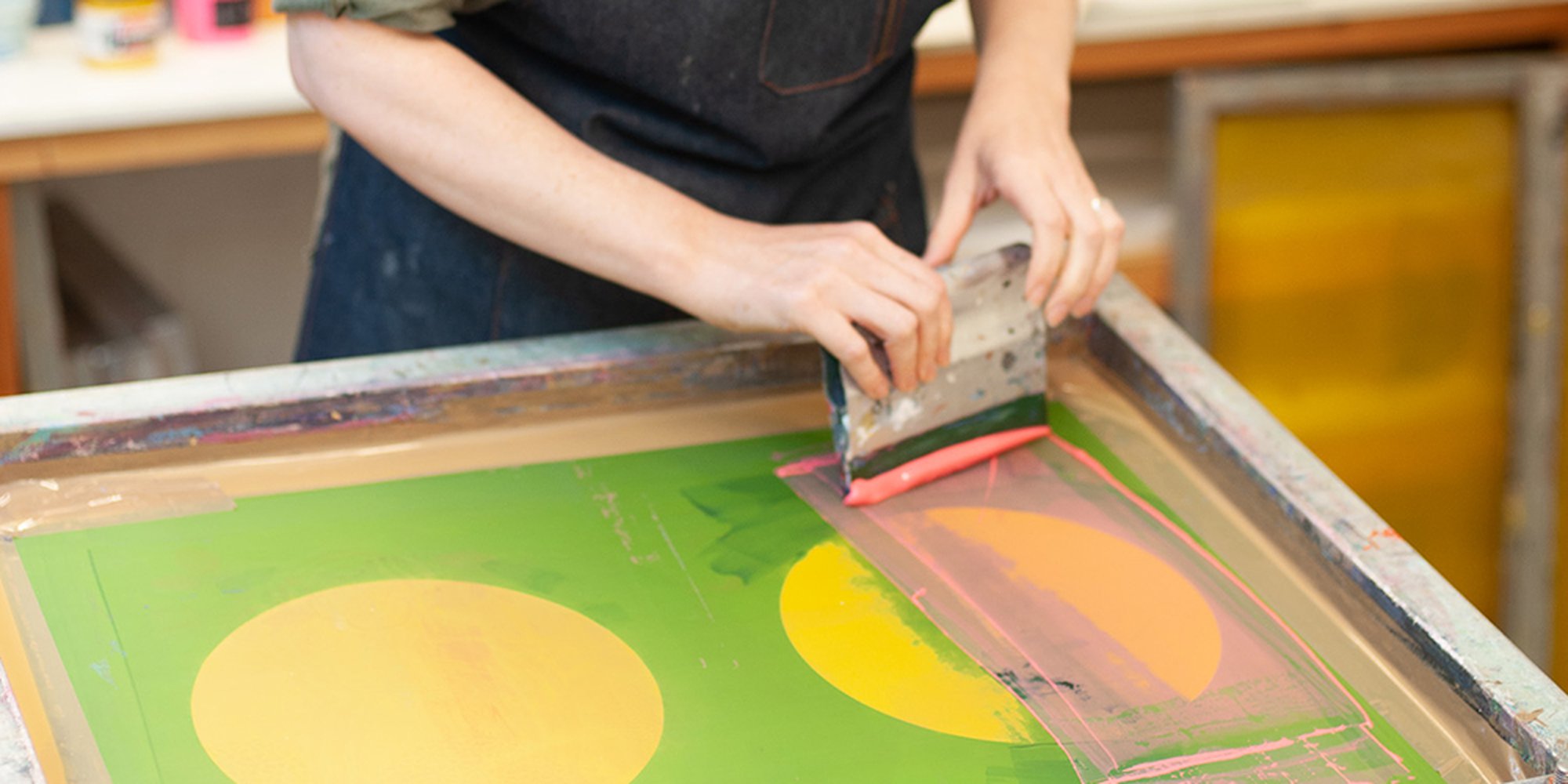The Crucial Guide to Comprehending Screen Printing and Its Versatile Makes use of
Screen printing has an abundant background that dates back to ancient times, progressing into an advanced method used throughout various industries today. This overview checks out the intricacies of the screen printing procedure, describing its applications in style, marketing, and home décor - 10:9 Design Screen Printing. Understanding these principles can open creative capacity for both industrial and artistic jobs. The adhering to areas will certainly expose crucial suggestions and techniques to boost one's screen printing ventures
The History of Screen Printing
Although screen printing has roots that map back centuries, its advancement mirrors the artistic and technical innovations of different cultures. Coming from old China, the strategy was originally utilized for embellishing fabrics and later spread to Japan, where it became important to Ukiyo-e woodblock printing. The method changed to Europe in the 18th century, where it gained popularity amongst artisans and industrial printers. The invention of picture solution in the 20th century transformed screen printing, permitting for even more elaborate styles and better effectiveness. Musicians like Andy Warhol further pushed its appeal, using the tool to develop renowned jobs that combined commercialism and fine art. By the late 20th century, screen printing had developed itself as a functional strategy, utilized in style, advertising, and fine art. Today, it continues to advance, incorporating digital modern technology and broadening its applications throughout numerous sectors.
The Screen Printing Process Explained
Screen printing transforms artistic visions into concrete layouts via a series of specific steps. At first, a photo is created and then moved onto a screen, commonly made of fine mesh fabric stretched over a frame. A light-sensitive solution is applied to the screen, which is revealed to light, hardening in areas not covered by the image. After cleaning out the unhardened solution, a stencil is developed.
Next off, the screen is positioned over the substratum, whether it be textile, paper, or an additional product. Ink is then pressed with the open areas of the pattern using a squeegee, depositing the layout onto the substrate listed below. This procedure can be duplicated for several colors, requiring separate displays for each color. The printed product is treated using warmth to ensure the ink adheres properly, resulting in a sturdy, lively design ready for usage.
Kinds Of Screen Printing Techniques

Furthermore, specialized methods, such as discharge screen printing, remove dye from the fabric to develop softer prints, while aluminum foil screen printing applies metallic foil to achieve a shiny coating (10:9 Design reviews). Each strategy uses distinctive characteristics, dealing with numerous innovative requirements and production ranges, ultimately increasing the opportunities within the screen printing website domain name
Applications of Screen Printing in Different Industries

Additionally, the signs and advertising and marketing markets utilize screen printing for creating eye-catching display screens and banners. This technique enables vibrant colors and intricate layouts that catch attention. In electronic devices, screen printing is utilized for applying conductive inks to motherboard, vital for part links. The home décor sector accepts screen printing to generate unique layouts on textiles and wall surface art. On the whole, screen printing works as a vital tool throughout diverse areas, boosting items with personalized and visually enticing graphics.
Tips for Effective Screen Printing Projects
While taking on a screen printing project, mindful attention to information can considerably improve the final result. Picking top quality materials is necessary; this includes the screen, inks, and substrates. Utilizing appropriate mesh counts can impact ink deposition and information resolution. Prep work is equally important; complete cleaning of screens and appropriate direct exposure times guarantee crisp prints.
Next off, accurate enrollment is vital for multi-color prints. Making use of positioning tools can aid attain precise layering. Furthermore, testing prints on scrap materials before manufacturing aids identify prospective problems without squandering sources.

Often Asked Inquiries
What Materials Are Ideal for Screen Printing on Fabric?
Cotton and polyester blends are excellent for screen printing on fabric as a result of their sturdiness and ink absorption. In addition, specialized fabrics like silk or canvas can generate distinct textures and finishes, boosting the general design top quality.
Exactly how Do I Tidy and Maintain Screen Printing Tools?
To maintain and clean up screen printing devices, one need to routinely clean displays with appropriate solvents, check mops for wear, lube moving parts, and store all items in a completely dry, dust-free atmosphere to extend their life-span.
What Are the Ecological Influences of Screen Printing?
Screen printing can have substantial environmental impacts, including chemical waste from solvents and inks, water use during cleaning processes, and energy consumption. Sustainable methods and green products are necessary for minimizing these negative impacts.
Can Screen Printing Be Done at Home Properly?
Screen printing can be properly done at home with the right products and strategies. Enthusiasts can produce high quality prints, though success depends upon their ability degree, tools, and understanding of the procedure included.
What Are the Costs Related To Beginning a Display Printing Service?

Beginning a screen printing company entails expenses for devices, products, and work space. Preliminary costs usually range from a couple of hundred to a number of thousand bucks, depending on the range, quality of equipment, and preferred manufacturing capacity.
Screen printing has an abundant history that dates back to old times, evolving right into a sophisticated method utilized throughout various sectors today. One more strategy, rotary screen printing, uses cylindrical displays, helping with continual printing on material rolls, thereby enhancing performance for large-scale manufacturings. Additionally, specialty strategies, such as discharge screen printing, remove color from the fabric to develop softer prints, while foil screen printing uses metal foil to accomplish a glossy finish. In the fashion field, screen printing is widely used to create dynamic layouts on apparel, making it possible for brands to display their one-of-a-kind styles. Cotton and polyester blends are ideal for screen printing on fabric due to their toughness and ink absorption.